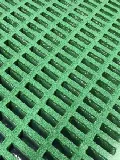loading...
- No. 9, Xingyuan South Street, Dongwaihuan Road, Zaoqiang County, Hengshui, Hebei, China
- admin@zjcomposites.com
- +86 15097380338
- Welcome to visit our website!
Innovative Applications of Fiber Reinforced Plastic Tanks in Modern Industries
The Advancements of Fibre Reinforced Plastic Tanks
In recent years, Fibre Reinforced Plastic (FRP) tanks have emerged as a revolutionary solution in various industries, primarily due to their lightweight, corrosion-resistant, and durable characteristics. The popularity of these tanks has proliferated across sectors such as water treatment, chemical storage, and oil and gas, thanks to their superior performance over traditional materials like steel and concrete. This article delves into the benefits, applications, and future potential of FRP tanks.
Understanding Fibre Reinforced Plastics
Fibre Reinforced Plastics are composite materials made from a polymer matrix reinforced with fibres, typically made from glass, carbon, or aramid. These fibres provide tensile strength and rigidity, while the plastic matrix offers resistance to chemicals and environmental factors. The combination results in a material that is not only lightweight but also shows outstanding resistance to corrosion, making FRP tanks an ideal choice for storing aggressive chemicals and fluids.
Advantages of FRP Tanks
1. Corrosion Resistance One of the most significant benefits of FRP tanks is their resistance to corrosion. Unlike steel, which can rust and deteriorate over time when exposed to harsh chemicals or moisture, FRP tanks maintain their integrity even in the most aggressive environments. This characteristic significantly reduces maintenance costs and extends the lifespan of the tanks.
2. Lightweight FRP tanks are considerably lighter than their steel or concrete counterparts. This reduction in weight simplifies transportation and installation and can lead to cost savings in construction, especially in large-scale projects where multiple tanks are utilized.
3. Customization FRP can be molded into various shapes and sizes, allowing manufacturers to tailor tanks to specific needs or applications. Custom designs are advantageous when working in constrained spaces or when specific capacities and dimensions are required.
4. Thermal Insulation FRP materials have inherent thermal insulation properties, making FRP tanks suitable for storing temperature-sensitive materials. They can help maintain stable temperatures within the tank, improving the performance and longevity of stored substances.
5. Environmentally Friendly An increasing emphasis on sustainability makes FRP tanks an attractive choice. Many of these tanks can be manufactured using recycled materials, and at the end of their life cycle, they can also be recycled. This aligns with contemporary environmental protection initiatives and regulations.
fibre reinforced plastic tanks

Applications of FRP Tanks
The versatility of FRP tanks enables their application across various sectors
- Water Treatment Used extensively in water treatment plants, FRP tanks play a crucial role in the filtration and storage of water, offering both durability and longevity. - Chemical Industry In chemical processing, the ability of FRP tanks to withstand corrosive substances makes them ideal for storing acids, alkalis, and other reactive materials.
- Oil and Gas FRP tanks are increasingly used for the storage of hydrocarbons and other petroleum products. Their lightweight nature facilitates easier deployment in remote locations.
- Food and Beverage The non-reactive nature of FRP makes it suitable for food and beverage storage, ensuring that the quality of the products is maintained without contamination.
The Future of FRP Tanks
As technological advancements continue, the future of Fibre Reinforced Plastic tanks seems promising. Innovations in material science and engineering are likely to enhance the properties of FRP, resulting in even more robust and versatile products. Furthermore, as industries become more aware of environmental issues, the demand for sustainable solutions will drive the adoption of FRP tanks.
In addition, ongoing research into new fibre materials, such as bio-based fibres and nanocomposites, could further improve the strength and environmental sustainability of FRP tanks. Such advancements can open new markets and applications, making FRP tanks indispensable in sectors that prioritize efficiency and sustainability.
Conclusion
Fibre Reinforced Plastic tanks represent a remarkable fusion of performance, efficiency, and environmental consciousness. Their properties make them an ideal choice for a wide range of applications, providing significant advantages over traditional storage solutions. As industries evolve and the demand for sustainable practices increases, FRP tanks are poised to play an even larger role in meeting the challenges of the future. The continued development and adoption of these tanks will not only enhance operational efficiencies but also contribute positively to environmental stewardship in various sectors.
-
Transform Your Spaces with FRP Grating SolutionsNewsNov.04,2024
-
The Versatility and Strength of FRP RodsNewsNov.04,2024
-
The Excellence of Fiberglass Water TanksNewsNov.04,2024
-
The Benefits of FRP Grating for Your ProjectsNewsNov.04,2024
-
Elevate Your Efficiency with FRP Pressure VesselsNewsNov.04,2024
-
Welcome to the World of FRP Pressure VesselsNewsOct.12,2024
-
Unveiling the Future of Filtration: Why FRP Filter Vessels are a Game ChangerNewsOct.12,2024
